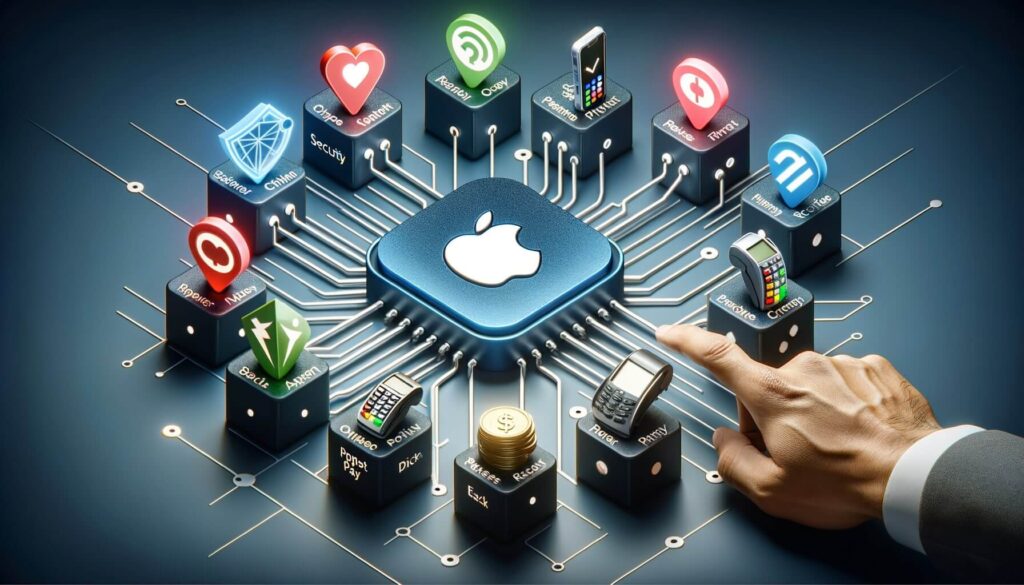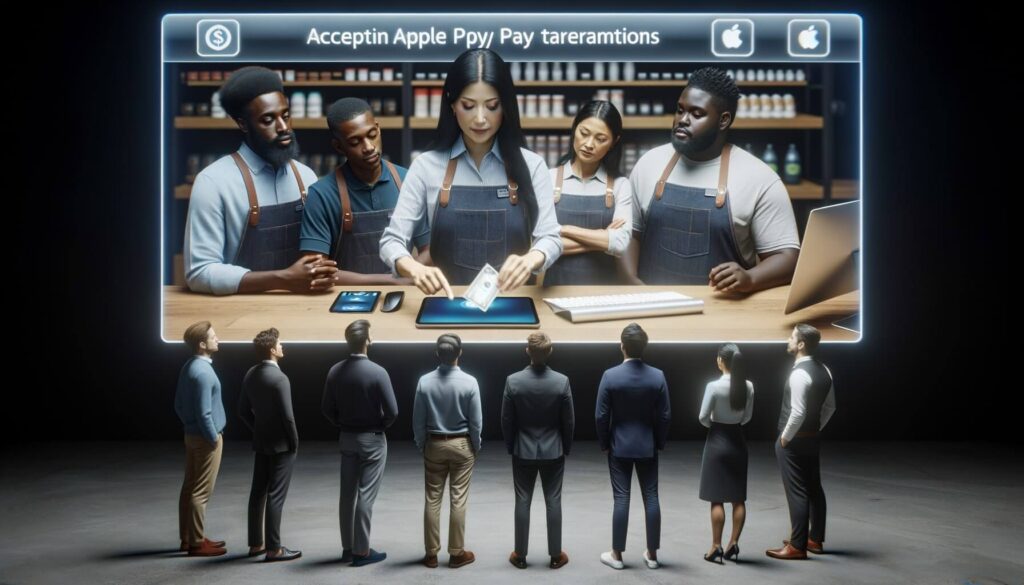
By DonnaELopez May 10, 2025
Apple Pay is a mobile payment and digital wallet service developed by Apple Inc. that allows users to make payments in person, online, and in apps using their Apple devices. It is a convenient and secure way for customers to pay for goods and services without the need for physical cash or credit cards.
For businesses, accepting Apple Pay can provide a number of benefits, including increased sales, improved customer satisfaction, and enhanced security. By offering Apple Pay as a payment option, businesses can attract tech-savvy customers who prefer the convenience of mobile payments. Additionally, Apple Pay transactions are encrypted and authenticated, making them more secure than traditional credit card payments.
Setting Up Apple Pay on Your Business Devices

To start accepting Apple Pay at your business, you will need to set up the service on your compatible devices. This includes iPhones, iPads, Apple Watches, and Mac computers. Here is a step-by-step guide to setting up Apple Pay on your business devices:
1. Check if your device is compatible with Apple Pay. Most newer Apple devices support Apple Pay, but it is important to verify that your device is capable of running the service.
2. Add your business credit or debit card to the Wallet app on your device. This will allow you to accept payments from customers using Apple Pay.
3. Set up Apple Pay on your device by following the on-screen instructions. You may need to verify your identity and agree to the terms and conditions of the service.
4. Once Apple Pay is set up on your device, you can start accepting payments from customers by using the NFC (Near Field Communication) technology built into your device.
Choosing the Right Payment Processor for Apple Pay Integration

When it comes to accepting Apple Pay at your business, choosing the right payment processor is crucial. A payment processor is a company that handles transactions between your business and your customers, including processing payments made through Apple Pay. Here are some factors to consider when selecting a payment processor for Apple Pay integration:
1. Compatibility: Make sure the payment processor you choose supports Apple Pay and is compatible with your business devices.
2. Fees: Consider the fees associated with using the payment processor, including transaction fees, monthly fees, and setup fees.
3. Security: Look for a payment processor that prioritizes security and compliance with industry standards to protect your customers’ sensitive information.
4. Customer support: Choose a payment processor that offers reliable customer support to help you troubleshoot any issues that may arise with Apple Pay integration.
5. Integration options: Select a payment processor that offers seamless integration with your existing POS system or e-commerce platform to streamline the payment process for your customers.
Training Your Staff on Accepting Apple Pay Transactions

Once you have set up Apple Pay on your business devices and selected a payment processor, it is important to train your staff on how to accept Apple Pay transactions. This will ensure that your employees are knowledgeable and confident in processing payments using Apple Pay. Here are some tips for training your staff on accepting Apple Pay transactions:
1. Provide hands-on training: Demonstrate how to accept Apple Pay payments using your business devices and walk your staff through the process step by step.
2. Role-play scenarios: Practice different payment scenarios with your staff, such as accepting payments in person, online, and in apps, to help them become familiar with the process.
3. Emphasize security: Educate your staff on the security features of Apple Pay and the importance of protecting customers’ payment information during transactions.
4. Offer ongoing support: Provide resources and support to help your staff troubleshoot any issues that may arise with Apple Pay transactions and stay up to date on best practices.
Promoting Apple Pay as a Payment Option to Your Customers

Once your business is set up to accept Apple Pay, it is important to promote the service to your customers to encourage them to use it. Promoting Apple Pay as a payment option can help increase awareness and adoption among your customer base. Here are some strategies for promoting Apple Pay to your customers:
1. Display signage: Place visible signs and stickers at your checkout counter or on your website to let customers know that you accept Apple Pay.
2. Offer incentives: Encourage customers to use Apple Pay by offering discounts, promotions, or loyalty rewards for using the service.
3. Educate customers: Train your staff to inform customers about the benefits of using Apple Pay, such as convenience, security, and speed.
4. Leverage social media: Use social media platforms to promote Apple Pay to your followers and share customer testimonials or success stories.
Ensuring Security and Compliance with Apple Pay Transactions
Security and compliance are critical considerations when accepting Apple Pay at your business. Apple Pay transactions are encrypted and authenticated, making them more secure than traditional credit card payments. However, it is important to follow best practices to protect your customers’ sensitive information and ensure compliance with industry standards. Here are some tips for ensuring security and compliance with Apple Pay transactions:
1. Use secure devices: Make sure your business devices are up to date with the latest security patches and software updates to protect against vulnerabilities.
2. Secure your network: Use a secure Wi-Fi network or a VPN (Virtual Private Network) to encrypt data transmitted during Apple Pay transactions.
3. Implement tokenization: Tokenization replaces sensitive payment information with a unique token to prevent unauthorized access to customers’ credit card details.
4. Monitor transactions: Keep track of Apple Pay transactions and review them regularly to detect any suspicious activity or potential fraud.
Troubleshooting Common Issues with Apple Pay Integration
Despite its convenience and security features, you may encounter some common issues when integrating Apple Pay at your business. It is important to be prepared to troubleshoot these issues quickly and effectively to minimize disruption to your operations. Here are some common issues you may encounter with Apple Pay integration and how to address them:
1. Connectivity issues: If you are unable to process Apple Pay transactions due to connectivity issues, try restarting your device or switching to a different network.
2. Payment errors: If a customer’s payment is declined or not processed successfully, check the transaction details and verify that the payment information is correct.
3. Device compatibility: If your business devices are not compatible with Apple Pay, consider upgrading to newer models that support the service.
4. Software updates: Make sure your devices and payment processor software are up to date with the latest versions to ensure compatibility and functionality.
Expanding Your Business Reach with Apple Pay
Accepting Apple Pay at your business can help you expand your reach and attract new customers who prefer the convenience of mobile payments. By offering Apple Pay as a payment option, you can tap into a growing market of tech-savvy consumers who are increasingly using their smartphones for everyday transactions. Here are some ways you can leverage Apple Pay to expand your business reach:
1. Reach new demographics: Appeal to younger consumers who are more likely to use mobile payment services like Apple Pay for their purchases.
2. Increase customer loyalty: Provide a seamless and convenient payment experience for your customers to encourage repeat business and build customer loyalty.
3. Stand out from competitors: Differentiate your business from competitors by offering cutting-edge payment options like Apple Pay that cater to modern consumer preferences.
4. Drive online sales: Integrate Apple Pay into your e-commerce platform to streamline the checkout process and reduce friction for online shoppers.
Frequently Asked Questions about Accepting Apple Pay
Q: How secure is Apple Pay compared to traditional credit card payments?
A: Apple Pay transactions are encrypted and authenticated, making them more secure than traditional credit card payments. Additionally, Apple Pay does not store or transmit customers’ credit card details, reducing the risk of data breaches.
Q: Can I accept Apple Pay on my Android device?
A: No, Apple Pay is only available on Apple devices, including iPhones, iPads, Apple Watches, and Mac computers. Android users can use alternative mobile payment services like Google Pay or Samsung Pay.
Q: Are there any fees associated with accepting Apple Pay at my business?
A: The fees associated with accepting Apple Pay may vary depending on your payment processor. Be sure to review the terms and conditions of your payment processor to understand any fees that may apply.
Q: Can I accept Apple Pay for online transactions?
A: Yes, you can integrate Apple Pay into your e-commerce platform to accept payments from customers shopping online. Make sure your payment processor supports Apple Pay for online transactions.
Q: How can I track Apple Pay transactions at my business?
A: Your payment processor should provide reporting and analytics tools to help you track Apple Pay transactions at your business. Monitor transaction volumes, sales trends, and customer preferences to optimize your payment strategy.
Conclusion
In conclusion, accepting Apple Pay at your business can provide a range of benefits, including increased sales, improved customer satisfaction, and enhanced security. By following the steps outlined in this guide, you can set up Apple Pay on your business devices, choose the right payment processor, train your staff on accepting Apple Pay transactions, promote the service to your customers, ensure security and compliance, troubleshoot common issues, and expand your business reach.
As mobile payments continue to gain popularity among consumers, embracing the future of payments with Apple Pay can help you stay ahead of the curve and meet the evolving needs of your customers. By offering a convenient and secure payment option like Apple Pay, you can enhance the overall shopping experience for your customers and drive growth for your business in the digital age.